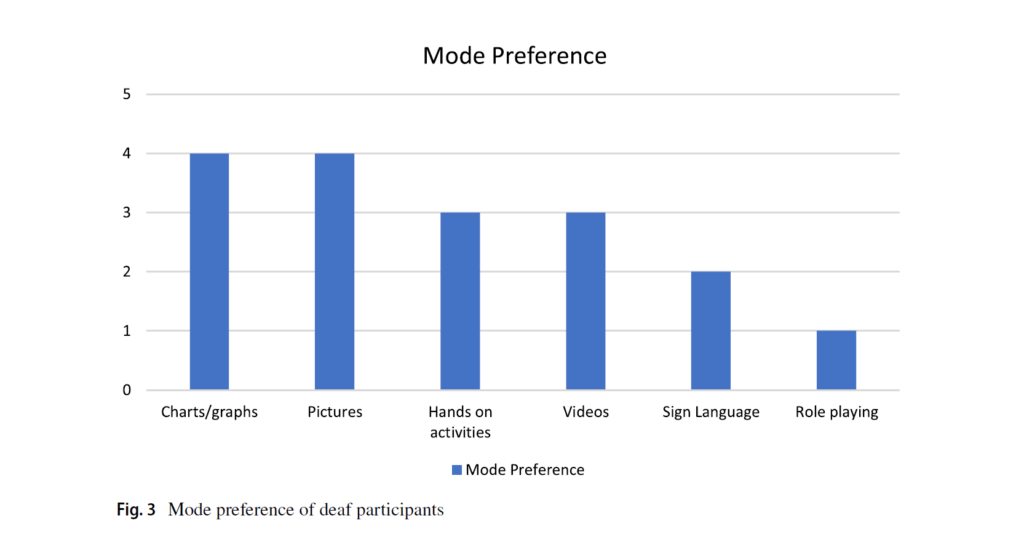Using a multimodal approach in teaching literacy to Deaf college students enhances their comprehension
15 Jan 2025

This study explored the perceptions of five Deaf college students regarding the use of a multimodal approach in teaching literacy. Literacy was defined as the ability to access and interpret information conveyed through various modes of communication such as spoken, written, visual or signed. Over the course of ten lessons, students engaged with four key modalities—linguistic, visual, socio-cultural, and kinesthetic—in a scaffolded learning environment designed to highlight their strengths and facilitate their understanding of literary materials.
The research primarily relied on qualitative data from interviews, supported by quantitative data from scores in a reading inventory as well as lesson activities. Findings suggested that comprehension is affected by the type of literature read, students’ prior knowledge, and availability of the modalities. The study showed that even though the Deaf are generally considered visual learners, the participants in the study preferred the integration of the different modalities for them to comprehend better.
This research addresses the dearth in published literature on reading and literacy development among Filipino deaf students. It recognizes Deaf identity and culture as an integral part of literacy learning. It contributes to the global call for research to highlight the strengths of deaf readers and utilize them in teaching literacy. Its use of multiple modalities (linguistic, visual, socio-cultural and kinesthetic) in teaching literacy to Deaf college students promotes not only literacy development, but also inclusion and social justice.
Authors: Marian Patricia Bea U. Francisco (School of Deaf Education and Applied Studies, De La Salle-College of Saint Benilde) and Portia P. Padilla (College of Education, University of the Philippines, Diliman)
Read the full paper: https://doi.org/10.1007/s11145-023-10440-4
